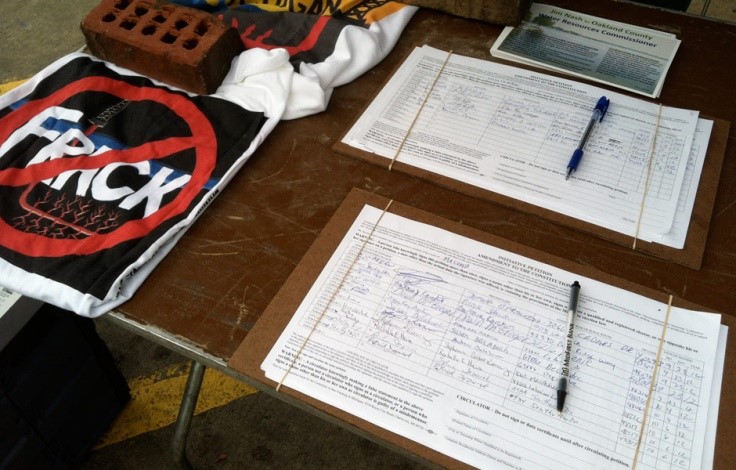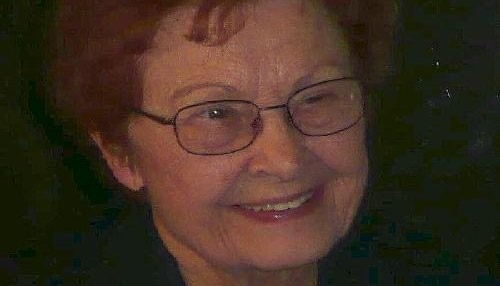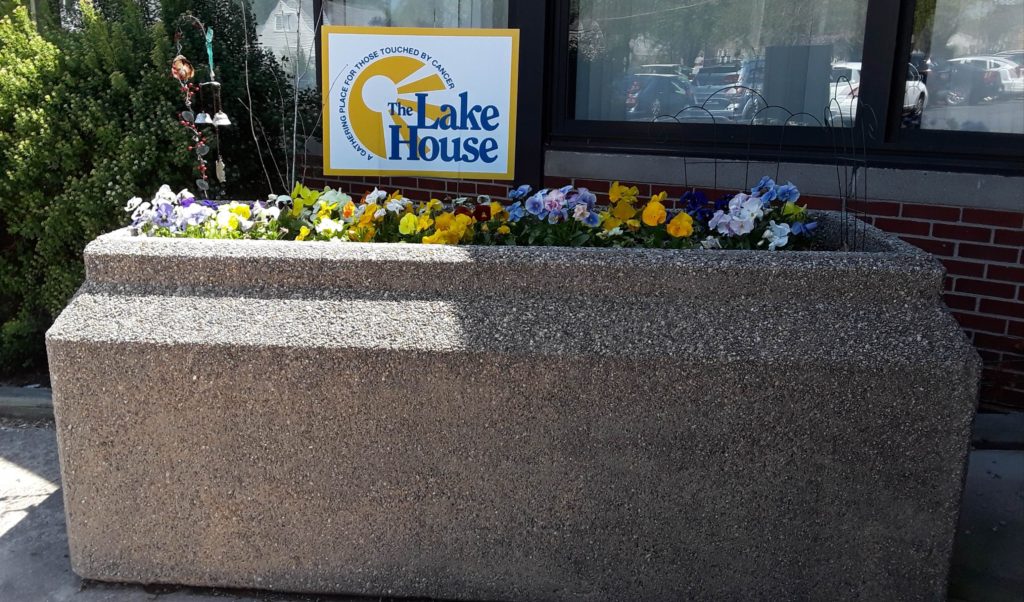
There is a little gem of a community treasure located in St. Clair Shores that is gradually becoming recognized for its contributions and guidance for patients and volunteers alike: The Lake House. Known as “The Gathering Place for Those Touched by Cancer,” The Lake House is now in its second location, getting out the message that “If there is cancer in your house, you are welcome in ours.”
The search to verify if there was any interest for such an organization began with a 2008 newspaper article announcing a meeting to discuss the proposed idea. More than 200 people attended.
In view of the existence of a west-side Detroit Gilda’s Club – a cancer center founded in honor of the late cancer victim, actress Gilda Radner – it seemed as if this idea was what Eastsiders had been waiting for.
Originally founded by 16 focused members from the medical community and other volunteers, The Lake House was established as Gilda’s Club East a decade ago. Under the driving force of St. John Hospital nurse Carolyn Schmidt, The Lake House came into existence largely because she carried that light forward. Both groups have an established crossover of board members and founders, as well as some members.
Ensconced initially in a converted SCS 7/11 building, The Lake House has since expanded with a 2017 move to the former Pare Elementary School where it shares spacious quarters with other non-profit organizations. Following a 2010/11 merger with Wellness Community, today The Lake House is officially known as Cancer Support Community. The 501C3 non-profit organization receives income from events, individual donations and grants.
“I’m willing to try anything,” says Executive Director Madeline Bialecki. “The first three years, we only were able to be open for three days; it’s my goal to be solvent enough to make it available for five days.”
In 2016, the Lake House served 350 individuals in the community; by 2017, that had grown to 400. In the first four months of 2018, the number was already shadowing 300. People are currently helped through 20 programs consisting of support groups, wellness activities, social activities, educational seminars, and spiritual activities. Meaningful connections have also been forged with St. John Hospital, Henry Ford Hospital, McLaren Macomb, Karmanos Cancer Institute and Beaumont Hospitals, all of whom also help with sponsorships.
As the only Lake House director with a background in non-profit management, Bialecki has helmed the ship and created a course for sure success. Anxious to establish roots and branches for The Lake House, she continues to dig deeper and fortify a solid foundation within the surrounding communities.
“Research has shown that with cancer, patients won’t exceed traveling more than 10 miles to receive support,” says Bialecki. In her role as the fourth official director, Bialecki has largely steered The Lake House into a burgeoning future.
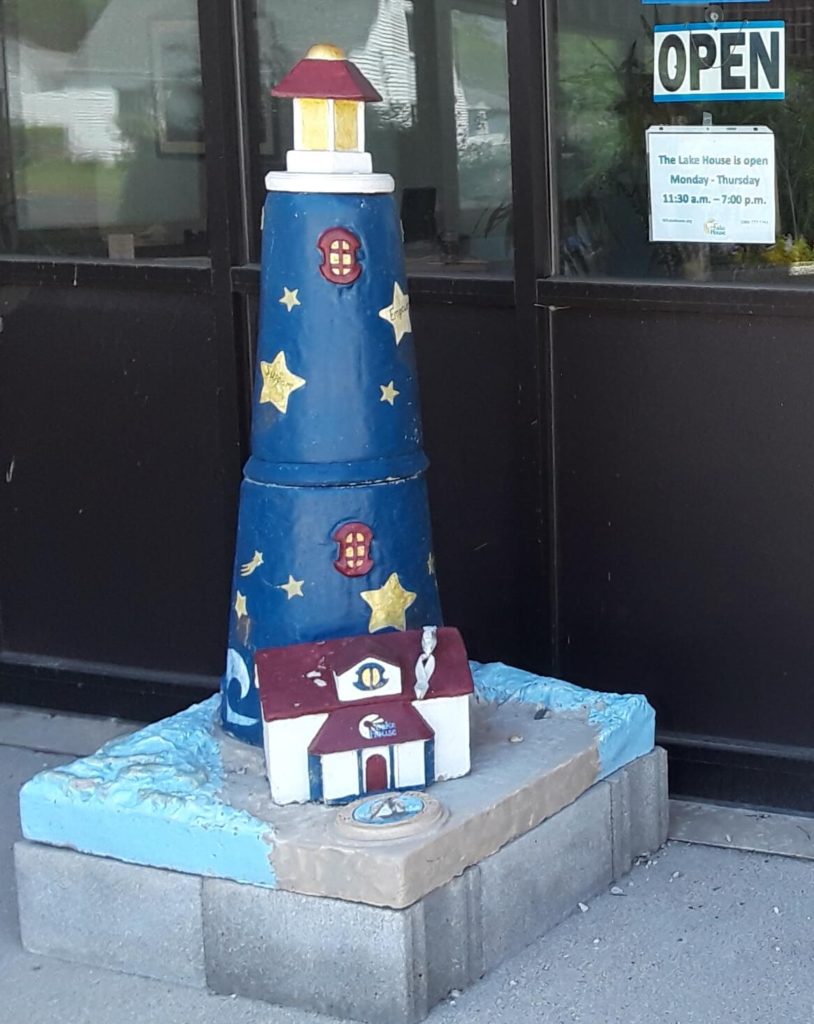
Facing deportation, some face religious persecution — and possible death — if forced to return to Iraq
By Wendy Clem
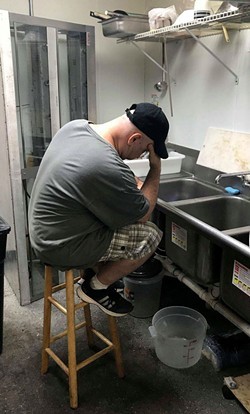
Ghandi Shaba reflects on his pending deportation during a work break.
Ghandi Shaba is a 40-year-old Chaldean day-laborer who is in hiding and lives hand-to-mouth in the greater-Detroit area, barely earning enough to pay for his meager room. He lives alone, struggling daily as a frightened Catholic caught in the government’s net cast to deport more than 1,400 potential Iraqi nationals.
He’s here legally. His family arrived in October 1982 after waiting to correctly enter America through European stopgaps. Having left Iraq when he was 3, they were granted refugee asylum due to Iraq’s persecution of Christians.
“I only know American life; I have always identified as American,” says Shaba, who finally landed on U.S. soil at the age of 5, greeted by his grandmother who legally preceded him here. “I don’t remember Iraq and never studied Arabic. All my family is here, and all but one of my family are U.S. citizens. I don’t know how I would survive in Iraq — I couldn’t even communicate there — and even if I did, it wouldn’t be for long. I would be killed. Christians are a minority there.”
With less than one month left to determine who will be deported, those targeted are scrambling to prepare their cases for court review. That legal hiatus was instituted in June by Detroit’s U.S. District Judge Mark Goldsmith, who provided a 90-day extension from immediate arrest and deportation by I.C.E., the Immigration and Customs Enforcement division of Homeland Security.
According to Migration Policy Institute, from October 2016 through April 2017, 42,414 refugees were admitted to the U.S., nearing the recently reformed ceiling of 50,000. President Donald Trump’s Executive Order 13780, “Protecting the nation from foreign terrorist entry into the United States,” reduces the original permissions for 110,000, and suspends refugee resettlement for 120 days to enhance vetting. It also enjoins state and local jurisdictions in that process, although the order’s contents have all been challenged in court.
However, few Americans seem to understand that deporting the more than 1,400 Iraqis is not centered on them being Muslim, terrorists, or here illegally. In fact, it also targets Christians who entered legally — people who have been our neighbors for decades. Many own businesses, are well-established in communities, and were raised speaking only English and Aramaic, the Chaldean dialect.
They are people whose otherwise normal worlds have been turned upside down by ghosts from their pasts.
“Each defendant must ask that his case be re-opened and considered, and some of these potential deportees have minor crimes on their records,” says legal consultant Rima Blanco, who is representing Shaba and others. “But, they were granted refugee asylum here due to torture in Iraq, a circumstance that has been ongoing for decades. To endanger them by reversing that situation is unconscionable.”
Ghandi Shaba was also a normal American kid. At the age of 15, he rebelled. He smoked pot. He ended up in the legal system, including an incident involving possession of stolen cell phones. Consequently, he served time in a boot camp and county jail. He missed graduation with his class from Hazel Park High School, and generally fared worse than the American teens with whom he chummed.
In the process of making such mistakes, it cost Shaba his green card and a chance at citizenship. However, the judge who oversaw his case reassured him: “You don’t need to worry about not having a card; you will be buried in American soil.”
But today, he justifiably fears being buried — first by the U.S. legal system, and then by Muslim Iraqis. Losing that card put a target on him, both here and in Iraq, where Blanco says Christians only emerge to grocery shop, donning Muslim outerwear to do so. People there are also required to wear I.D. containing their name and religion as well as the names and religion of their parents and grandparents.
That, Shaba says, could cost him his life.
“We live in fear for Ghandi,” says his sister, Ghiyda Salman. “Yes, he was guilty of bad judgment as a young teen and he hung with the wrong crowd. But every day now he’s scared about what will happen and when. He spends much of his time praying.”
U.S. laws protecting legal immigrants and their children have been in flux, particularly in the past two decades. The Child Citizenship Act of 2000 might have played a key role in securing Shaba’s citizenship, but its timing was off. Signed into law by then-President Bill Clinton, H.R. 2883 amended the Immigration and Nationality Act (INA) permitting foreign-born children (including adoptees) to automatically acquire citizenship after meeting certain requirements.
Scurrying to help as many Chaldeans as possible by their deadlines, Blanco says the status of potential deportees remains unknown. “Each will be judged on a case-by-case basis,” he says.
But Shaba says he would do anything to be able to stay here.
“I feel as if I have paid my dues through the years. My mistakes cost me everything; I didn’t finish my education or become a citizen, and my work history has included sporadic jobs, causing my credit history to be bad. But, I have tried to make up for my errors and become the best citizen ever,” he says. “And, if America wants me to serve in the Army, I would go to war to defend this country. I just want to stay here. To live, I need to stay here. I will do whatever is asked of me to do that.”
This was first published in October, 2017 in The Detroit Metro Times newspaper and online. It can also be found at Linkedin.

